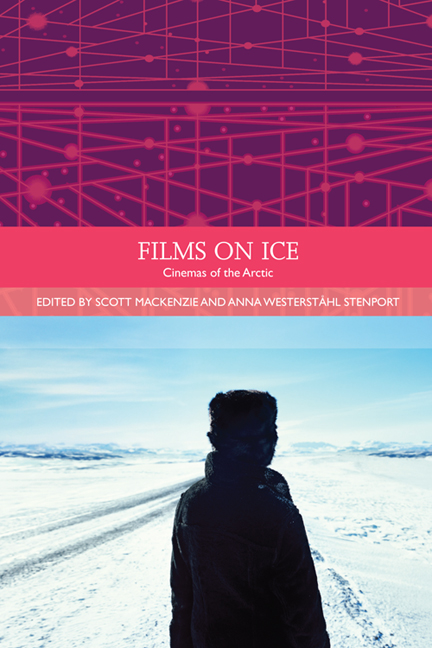Book contents
PART IV - MYTHS AND MODES OF EXPLORATION
Published online by Cambridge University Press: 05 September 2016
Summary
Cinema quickly became an extension of late nineteenth- and early twentiethcentury exploration. These films captivated audiences around the world with images of a remote and largely unknown region and its indigenous populations. These films also documented the grandiose and perilous journeys of the explorers themselves. Filming was made more difficult by the limitations of technology in the extreme cold; the ability to document was often thwarted by brittle film and frozen cameras. Some explorer films were mostly about the expedition itself, where the returning explorer would often try to support new expeditions by showing films about his journeys on lecture tours. Others were about conquering the Arctic through the introduction of technologies that compressed space and time, such as the aeroplane or the railway. The final section of Films on Ice presents a historical trajectory from the very earliest filmmaking shot in the Arctic to contemporary digital media ruminating on the past, and it unearths a plethora of films that have been left out of the film historical canon. In the chapter ‘The Changing Polar Films: Silent Films from Arctic Exploration 1900–30’, Jan Anders Diesen discusses not only the first known examples of film shot in the polar region, but also elucidates the role polar expedition films played as cinema was becoming a broad attraction globally. Analysing footage from archives around the world, Diesen contextualises how mass media and technological developments for capturing and relaying to the world feats of exploration, often in the service of nationalism or personal gain, have come to shape the perception of the Arctic region to this day. Marina Dahlquist demonstrates in ‘The Attractions of the North: Early Film Expeditions to the Exotic Snowscape’, how a large number of actualités – short non-fiction films from the early history of cinema – set in the Arctic are built around the exotisation and Othering of the S ámi. In ‘Frozen in Motion: Ethnographic Representation in Donald B. MacMillan's Arctic Films’, Rebecca Genauer examines how the explorer and prolific Arctic filmmaker MacMillan, who went on Robert Peary's 1908–9 expedition, disavowed narrative and generic conventions of ethnographic representation, which allowed his films to break from the supposed verisimilitude characteristic of contemporary explorer films.
- Type
- Chapter
- Information
- Films on IceCinemas of the Arctic, pp. 261 - 264Publisher: Edinburgh University PressPrint publication year: 2014



